Fujifilm Fujinon XF 100-400 mm f/4.5-5.6 R LM OIS
3. Build quality and image stabilization
In the photo below the Fujinon is positioned next to its system 18-55 mm brother and the Panasonic Leica DG Vario-Elmar 100–400 mm f/4.0–6.3 ASPH. POWER O.I.S. designed for Micro 4/3 sensors.
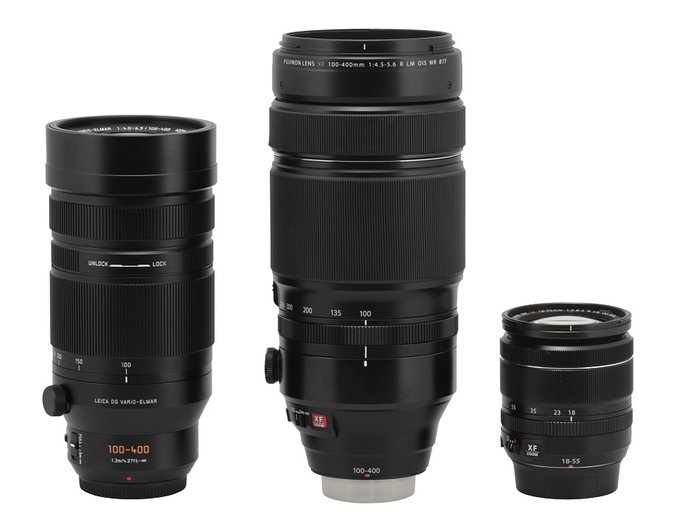 |
Please Support UsIf you enjoy our reviews and articles, and you want us to continue our work please, support our website by donating through PayPal. The funds are going to be used for paying our editorial team, renting servers, and equipping our testing studio; only that way we will be able to continue providing you interesting content for free. |
- - - - - - - - - - - - - - - - - - - - - - - - - - - - - - - - - - - - - - - - - - - - - - - -
The Fujinon XF 100–400 mm f/4.5–5.6 R LM OIS starts with a metal mount which surrounds contacts and an inner tube; inside that tube you see a rear element, of about 2.5 cm in diameter. At 100 mm the element is hidden almost 3 cm deep and at 400 mm it is positioned just 2 cm deep. The darkening of the inside is good and you can’t glimpse any electronic parts through side slits.
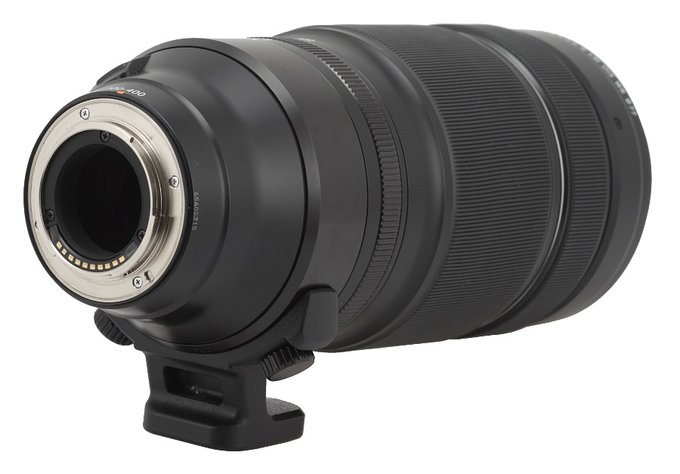 |
A widening ring made of plastics which doesn’t move is the first part of the proper body of the lens; on it you can find a red dot, making an alignment with a camera easier, focal length marks, the serial number of the lens, the info that this piece of equipment was produced in Japan and it is weather resistant.
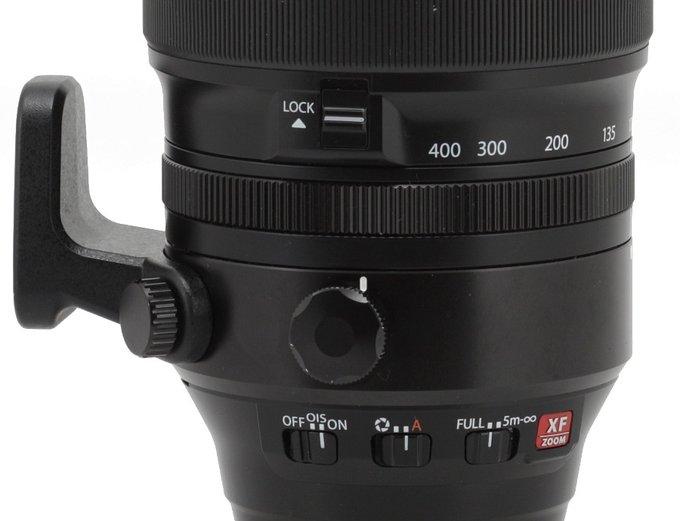 |
On the left side of that ring there is a series of switches preceded by a red XF ZOOM mark. The first switch is a focusing mechanism limiter with two settings: FULL and a range from 5 meters to infinity. The second switch allows you to control the aperture (pre-selection, automatic) and the third one is responsible for stabilization (OIS ON/OFF).
Further on you see a metal ring which can be moved; it is joined with a stable tripod adapter and we admit this solution is quite original. You don’t detach the adapter from the body with the ring but you can unscrew it from the ring; there are special screws for that purpose, quite comfortable to use.
The next part is an aperture ring. It is 9 mm wide and most of its surface is covered by ribbing. You can easily change the aperture every 1/3 EV stop.
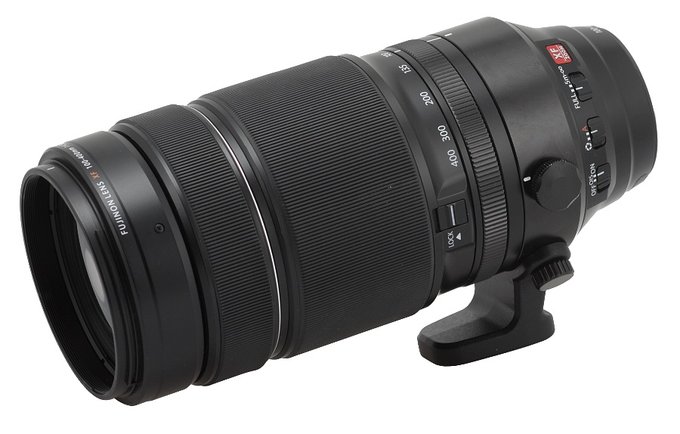 |
A zoom ring, as wide as 71 mm, is the biggest part of the body; most of it is ribbed and below the ribs you see focal length markings at 100, 135, 200, 300 and 400 mm. The ring moves smoothly and is well-damped; it can be also blocked at 100 mm with a special LOCK button. Still we didn’t have to use it during our test because the tube, either influenced by the gravitational pull or more vigorous movements, didn’t have any zoom creep tendencies at all.
The next part is a manual focus ring. It is 25 mm wide, completely covered by ribs. There is no scale whatsoever but it does feature a Twin Linear Motor which performance is beyond reproach. If you move it with an average speed then running through the whole scale takes a turn through an angle of about 300 degrees. It really ensures a great precision of manual settings.
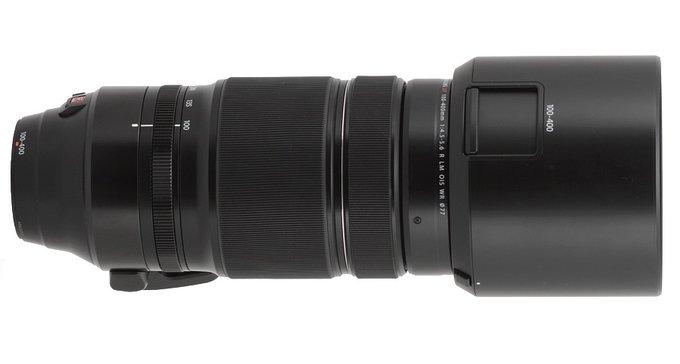 |
An immobile ring with the name and the parameters is the next part of the lens. As you increase the focal length it is extended on a stable, uniform tube made of plastics. At 400 mm the length of the lens increases by about 6 cm.
The front element is 72 mm in diameter, slightly hidden inside the tube and surrounded by a non-rotating filter thread, 77 mm in diameter.
When it comes to weather resistance the producer boasts of incorporating as many as 13 gaskets in twelve places of the construction which prevents water and dirt from penetrating inside the lens. What’s more, the outer lenses are covered by dirt and water repelling coatings which make the instrument easier to clean.
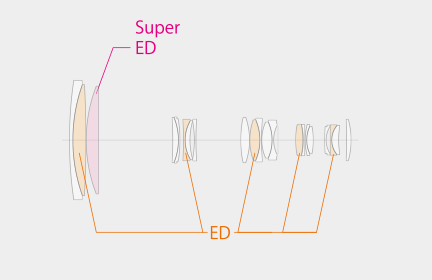
The optical construction of the Fujinon100–400 mm consists of 21 elements positioned in 14 groups. Inside you find as many as five low dispersion ED elements and one super low dispersion element (Super ED). There is also an aperture with nine diaphragm blades which can be closed down to a value of f/22 (independently of the focal length).
Buyers get both caps in the box (but the one covering the mount side of the lens is, unfortunately, just a blind cap without any thread), a hood and the tripod adapter we’ve already mentioned earlier in the chapter.
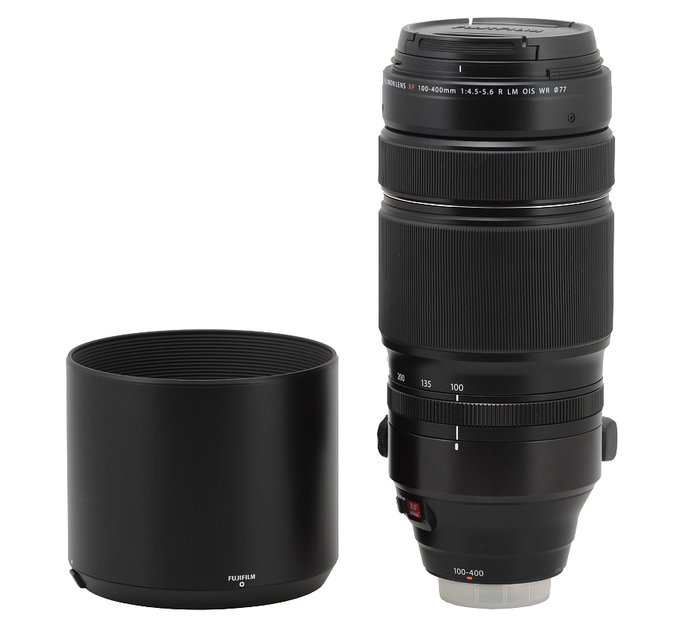 |
Optical stabilization
In the case of the best lenses their producers boast of stabilization as efficient as 4-4.5 EV. Fujinon went even a bit further by declaring that the 100-400 mm model’s stabilization unit is as efficient as 5 EV. Of course we had to check that claim. In order to do that at the 400 mm focal length we took several dozen photos at every exposure time ranging from 1/640 to 1/15 of a second with the stabilization switched on and off. Then we determined a percentage of blurry photos at every exposure time and presented it as an exposure time graph, expressed in EV (with 0 EV being the equivalent of 1/500 of a second). That’s how the graph below was constructed.
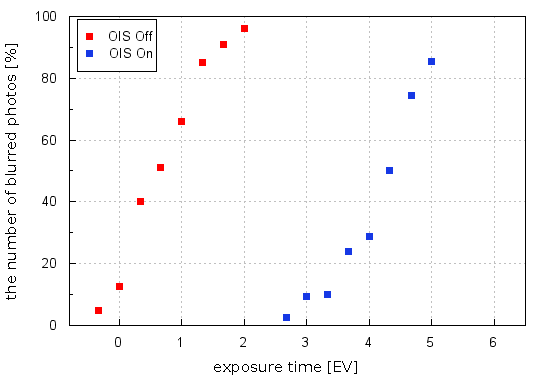
You can see at once that the 5 EV efficiency is simply out of question. The maximum distance between both curves reaches almost 4 EV and such is, in our opinion, the real efficiency of the stabilizing unit. Even if it differs from the claims of the producer we still consider it to be very good. Within the margin of error it remains almost as good as that of the Canon EF 100–400 mm f/4.5–5.6L IS II USM. In this class of equipment only the Nikkor AF-S 80–400 mm f/4.5–5.6G ED VR fared better, being by almost 0.5 EV more efficient that the Canon and the Fujinon.






